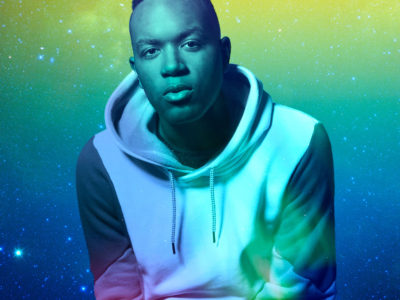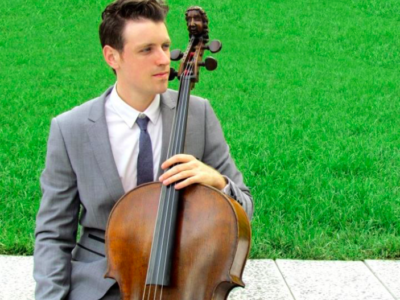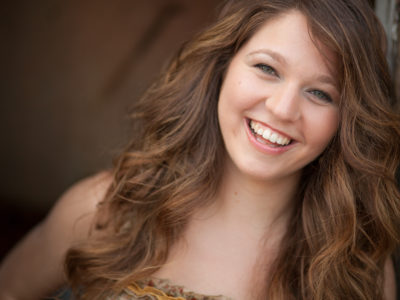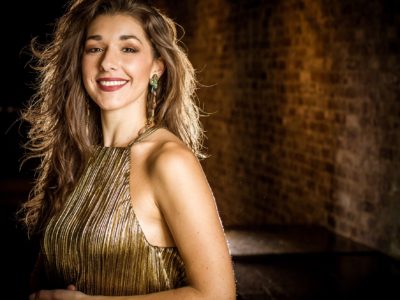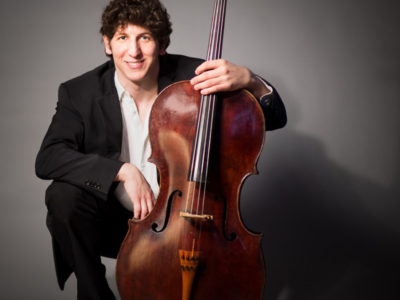Meet our Artist of the Week: Emmanuel Ceysson – Principal Harpist, The Metropolitan Opera
We sat down with Emmanuel to get to know him a little bit better and this is what we learned:
MT: How did you discover the harp? Was it your first instrument? Do you come from a musical family?
Emmanuel: I don’t come from a musical family, in fact both my parents were professors of literature. My grandfather was an amateur clarinetist and passed on the love of classical music to my mother. When I was about 6 years old I had my first interaction with music at a music ed course where we studied solfège and listened to classical music. I remember listening to Mozart’s double concerto for flute and harp and immediately falling in love with the instrument.
My mother endured a difficult pregnancy and was bed ridden for much of the time and listened to a lot of music – especially Mozart – to pass the time. Perhaps that has something to do with my choice as well.
I started playing the harp when I was 7 years old, and was later accepted into the Paris conservatoire. I begun playing the trombone as a second instrument when I was 12. It helped me find my breath and develop a more physical relationship with an instrument, which was important for my growth as a musician.
MT: Tell us a little about your harp, what makes it unique?
Emmanuel: The design of my harp was created by the french harpist Carlos Salzedo, one of the fathers of the American school of harp in the early 20th century, and of course an important solo performer and teacher. He also founded the “International Composers Guild” with composer Edgard Varèse in an effort to bring more new European music to the United States.
Salzedo helped design two models of harp that are still produced today by the Lyon and Healy harp manufacturing company. One of these models is the Art Deco Salzedo model which was made in 1928.
In honor of the the 150th anniversary of Lyon and Healy, a special version of this Salzedo model was produced in a vibrant red color. The company asked Salzedo’s most well known students to send in their marked up scores, scanned the red pen markings and produced this unique color for the harp. I was invited for the celebration gala since I had been playing on Lyon and Healy instruments and promoting their craft for the past 10 years, and was the first one to play on this harp. I loved it immediately, requested to buy it and it has become my trade mark ever since.
MT: How varied is the solo harp repertoire and how often does one get to perform it? Do you enjoy giving solo recitals?
Emmanuel: I was trained as a solo performer growing up and was always fond of the idea of becoming solo performer. In France it is rare to train as an orchestral musician, it is something that one learns from experience. Although I love performing solo recitals, it is unfortunately quite a big challenge to sustain a life on that alone especially as a harpist. There is not much demand for harp recitals as the repertoire is mostly composed by harpists and not well known composers like Beethoven and Chopin. The harp is an extremely specific instrument and a composer needs to get to know it intimately in order to write for it. Composing for the harp is challenging even for modern day composers because of the unique nature of the instrument: We use only eight fingers and have a complex pedal system which prohibits accessibility to all notes at all times, as opposed to the piano for example.
That being said, I love performing solo recitals. The novelty of this exotic instrument always creates a huge impact on the audience both visually and aurally. There is a true wealth of color and sound that people just do not expect, and that definitely commands attention when the harp stands alone on stage.
MT: What first drew you to the world of Opera?
Emmanuel: I finished my studies at the Paris conservatoire when I was 20 years old and immediately begun attending competitions and playing as a soloist. I realized, however, that In order to sustain myself as a musician I would need a more stable job in an orchestra. To my luck, there was an opening for a position at the Paris Opera. It was then that I became immersed in this world, and began knowing the repertoire more intimately.
MT: How would you compare playing in a symphony orchestra to playing in an opera pit?
Emmanuel: I played in a symphony orchestra while I was still studying at the conservatoire from the age of 18 to 21. I can whole heartedly say that I much prefer playing in Opera. Playing in a symphony I felt constrained by the conductor’s vision where as in an Opera there is much more freedom for self expression. There is also a lot more to play for a harpist in the operatic repertoire: nearly all operas starting in the 20th century have harp part. The parts can be extremely sparse, which can cause of frustration and lack of involvement, but you get used to it and learn how to experience it as a challenge instead. My favorite operas to perform are the ones by Wagner and Strauss, the harp has a much fuller part and is much more involved in the score.



